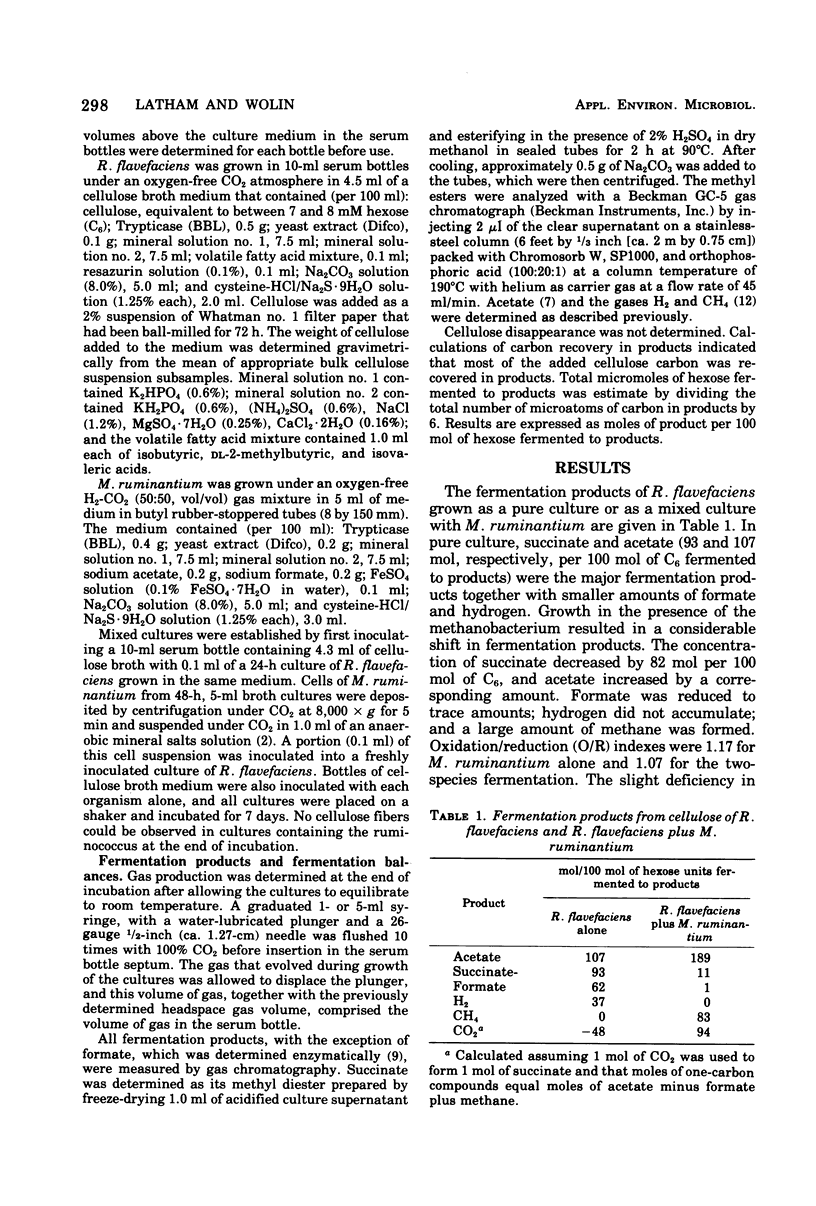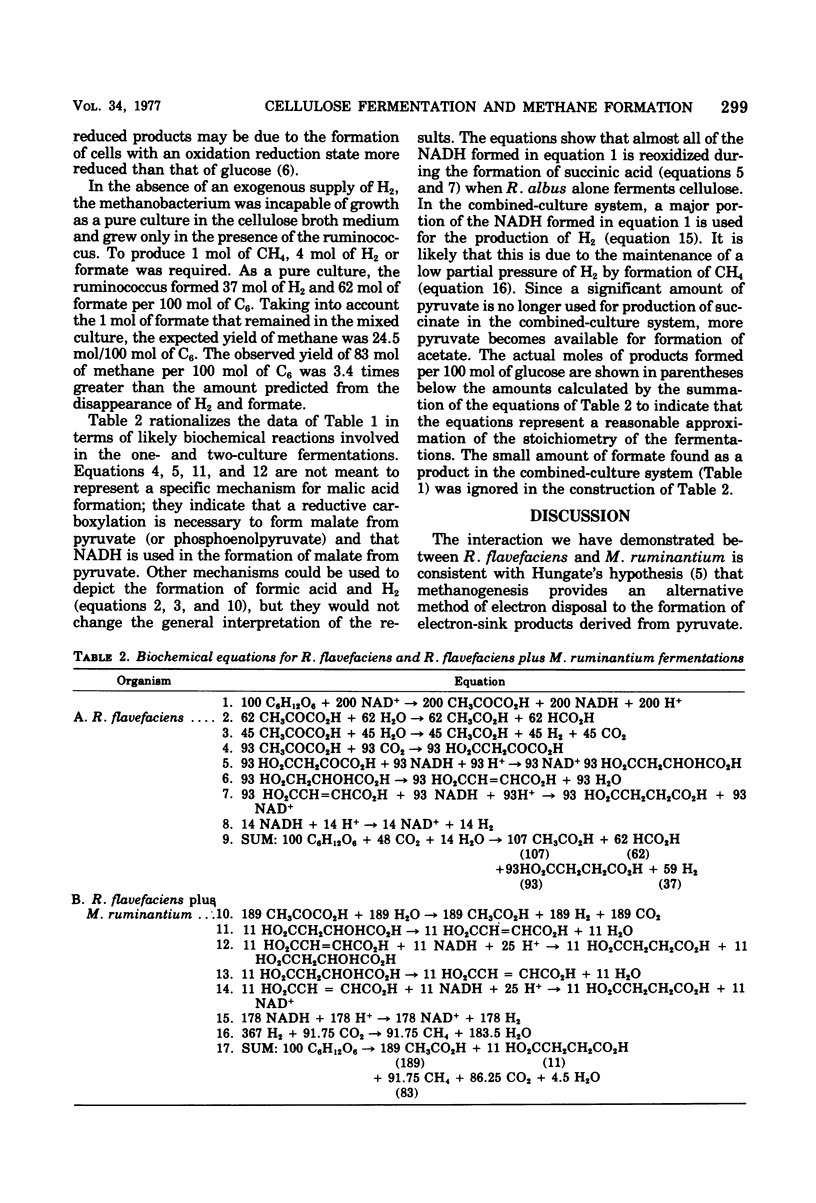Abstract
The anaerobic cellulolytic rumen bacterium Ruminococcus flavefaciens normally produces succinic acid as a major fermentation product together with acetic and formic acids, H2, and CO2. When grown on cellulose and in the presence of the methanogenic rumen bacterium Methanobacterium ruminantium, acetate was the major fermentation product; succinate was formed in small amounts; little formate was detected; H2 did not accumulate; and large amounts of CH4 were formed. M. ruminantium depends for growth on the reduction of CO2 to CH4 by H2, which it can obtain directly or by producing H2 and CO2 from formate. In mixed culture, the methanobacterium utilized the H2 and possibly the formate produced by the ruminococcus and in so doing stimulated the flow of electrons generated during glycolysis by the ruminococcus toward H2 formation and away from formation of succinate. This type of interaction may be of significance in determining the flow of cellulose carbon to the normal rumen fermentation products.
Full text
PDF




Selected References
These references are in PubMed. This may not be the complete list of references from this article.
- Bryant M. P. Commentary on the Hungate technique for culture of anaerobic bacteria. Am J Clin Nutr. 1972 Dec;25(12):1324–1328. doi: 10.1093/ajcn/25.12.1324. [DOI] [PubMed] [Google Scholar]
- Bryant M. P., Wolin E. A., Wolin M. J., Wolfe R. S. Methanobacillus omelianskii, a symbiotic association of two species of bacteria. Arch Mikrobiol. 1967;59(1):20–31. doi: 10.1007/BF00406313. [DOI] [PubMed] [Google Scholar]
- Iannotti E. L., Kafkewitz D., Wolin M. J., Bryant M. P. Glucose fermentation products in Ruminococcus albus grown in continuous culture with Vibrio succinogenes: changes caused by interspecies transfer of H 2 . J Bacteriol. 1973 Jun;114(3):1231–1240. doi: 10.1128/jb.114.3.1231-1240.1973. [DOI] [PMC free article] [PubMed] [Google Scholar]
- Miller T. L., Wolin M. J. A serum bottle modification of the Hungate technique for cultivating obligate anaerobes. Appl Microbiol. 1974 May;27(5):985–987. doi: 10.1128/am.27.5.985-987.1974. [DOI] [PMC free article] [PubMed] [Google Scholar]
- Miller T. L., Wolin M. J. Formation of hydrogen and formate by Ruminococcus albus. J Bacteriol. 1973 Nov;116(2):836–846. doi: 10.1128/jb.116.2.836-846.1973. [DOI] [PMC free article] [PubMed] [Google Scholar]
- Scheifinger C. C., Linehan B., Wolin M. J. H2 production by Selenomonas ruminantium in the absence and presence of methanogenic bacteria. Appl Microbiol. 1975 Apr;29(4):480–483. doi: 10.1128/am.29.4.480-483.1975. [DOI] [PMC free article] [PubMed] [Google Scholar]
- Wolin M. J. Metabolic interactions among intestinal microorganisms. Am J Clin Nutr. 1974 Nov;27(11):1320–1328. doi: 10.1093/ajcn/27.11.1320. [DOI] [PubMed] [Google Scholar]
- de Vries W., van Wijck-Kapteyn W. M., Oosterhuis S. K. The presence and function of cytochromes in Selenomonas ruminantium, Anaerovibrio lipolytica and Veillonella alcalescens. J Gen Microbiol. 1974 Mar;81(1):69–78. doi: 10.1099/00221287-81-1-69. [DOI] [PubMed] [Google Scholar]


